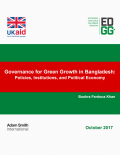
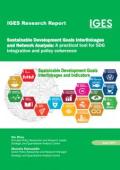
While being broadly framed as 17 separate and diverse elements, Sustainable Development Goals (SDGs) and associated targets inherently interlink with one another making up indivisible parts of sustainability from a systemic perspective. Actions or measures taken for achieving one goal may be mutually reinforcing or contradictory with achieving other goals. SDGs and associated targets through the connections among and between each other form a network of interlinkages. Understanding the interlinkages among the goals and between the targets is crucial for integrated governance and policy coherence for the implementation of SDGs. However, existing knowledge about these connections remains limited.
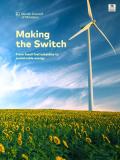
This report estimates fossil fuel subsidies to be around USD 425 billion. Such subsidies represent the large lost opportunities for governments to invest in renewable energy, energy efficiency and sustainable development. Removal of subsidies can lead to carbon emission reductions (6~8% by 2050 globally), Reductions that can be improved further with a switch or a "SWAP" towards sustainable energy.
This report describes the scale and impact of fossil fuel subsidies on sustainable development. It describes the SWAP concept to switch savings made from fossil fuel subsidy reform, towards sustainable energy, energy efficiency and safety nets. The report provides potential SWAP outlines for Bangladesh, Indonesia, Morocco and Zambia. "Making the Switch" was written for the Nordic Council Ministers by the Global Subsidies Initiative of IISD and Gaia Consulting.
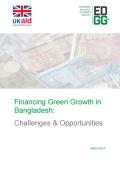
Many of the investments made in Bangladesh, especially in the manufacturing sector, have contributed to impressive growth in GDP over the last decade, but have presented the threat of locking in the country into an unsustainable development path. In Bangladesh, even though some policy alignments are evident towards achieving sustainable development goals, there are opportunities for creating an enabling environment for financial institutions, both formal and nonformal, to play a catalytic role for promoting green growth in the present and foreseeable future.
The present study reports on the different sources of green finance available in Bangladesh through grant, debt, and equity mechanisms; provides an insight into the green finance landscape in the country in general; presents the challenges financial institutions face in internalising green finance, and outlines the potential for greening growth of Bangladesh through identifying opportunities for accessing green finance from internal and external sources.
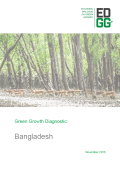
This report seeks to generate evidence on the binding constraints to shifting Bangladesh’s current economic strategy to one aiming at green growth. Specifically, it is critical that Bangladesh decouples its economy from the negative environmental effects of the economic growth path it is currently pursuing. It is important that green growth is pursued in order to unlock Bangladesh from its unsustainable growth path to a more sustainable and inclusive one.
This paper uses a novel approach which has not been trialled elsewhere- the Green Growth Diagnostic. This methodology will help Bangladesh develop its strategy to pursue an economic growth path that takes full account of natural resources and promotes sustainable development. This report will demonstrate and highlight the constraints that need to be addressed in order to do so.
